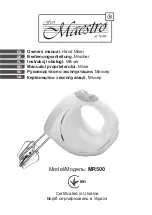
94
Dynamics
Dynamics
fig.PopGateGuide.eps
1.
TYPE select buttons
These select the gate/expander type from the following choices.
2.
KEY-IN meter
This indicates the level of the key-in signal. For stereo-linked
channels, two meters are shown (L and R).
3.
IN meter
This indicates the input level to the gate/expander. For stereo-
linked channels, two meters are shown (L and R).
4.
GR meter
This indicates the amount of gain reduction produced by the
gate/expander.
5.
Gate/expander graph
This indicates the approximate response of the gate/expander.
6.
OUT meter
This indicates the output level of the gate/expander. For stereo-
linked channels, two meters are shown (L and R).
7.
KEY-IN SELECT popup button
This accesses the KEY-IN SELECT popup where you can select
the key-in signal. For stereo-linked channels, there will be two
(L and R). The channel currently selected as the key-in signal is
shown on the button.
Gate
fig.PopGateGuide2.eps
a. THRESH knob
This adjusts the threshold level in a range of -80.0 dB–0.0 dB.
b. RANGE knob
This adjusts the RANGE in a range of -Inf dB–0.0 dB.
c. ATTACK knob
This adjusts the ATTACK time in a range of 0.0 ms–800.0 ms.
This is the time from when the input signal exceeds the
threshold level until the gate opens completely.
d. RELEASE knob
This adjusts the RELEASE time in a range of 0 ms–8000 ms. This
is the time over which the gate reaches its maximum effect after
the HOLD time has elapsed.
e. HOLD knob
This adjusts the HOLD time in a range of 0 ms–8000 ms. This is
the time from when the input signal falls below the threshold
level until the gate begins closing.
GATE/EXPANDER popup
1
7
2
3
4
5
6
GATE
Gate
EXPANDER
Expander
DUCKING
Ducking
a
b
c
d
e
M-400_v15_e.book 94 ページ 2008年6月20日 金曜日 午後4時5分
















































